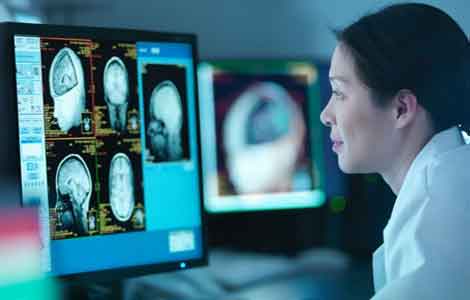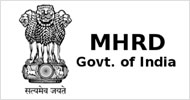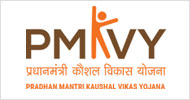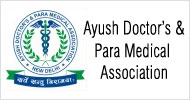Career in Radiography
Radiography is a paramedical professional course, offered to individuals who will one day perform diagnostic tests in medical treatment with the use of radiation. In simple terms, radiography may be described as the science of taking images of the internal and hidden portions of the human body for the purpose of diagnosing diseases and ailments.This includes the use of ultrasound, X-ray, CT scan, MRI, etc.
This profession calls for considerable technological expertise. Radiographers work as a part of the healthcare team in the Diagnostic Imaging Department, Accident & Emergency, Intensive Care Unit and Operating Theatre. Radiographers in short, are trained to take x-rays, MRI, CT scan etc. Sometimes, radiographers are also involved in giving radiotherapy treatment to cancer patients. Radiographers who can also perform the ultrasound test are known as sonographers.
A career in radiography can be very promising.The demand for radiographers has increased considerably in recent times, with significant technological development in medical sciences, creating new job opportunities.
(Please note that radiographers are different from radiologists. Radiologists are doctors who specialize in interpreting diagnostic images like X-rays, MRI and CT scans. They can also perform interventional procedures (such as an angiogram or biopsy).
Eligibility Criteria
Someone who wants to pursue a B.Sc in Radiography should have completed Science (10+2) preferably with Physics, Chemistry and Biology/Maths. The duration of the course is three years.You can also take up one-year certificate courses after 10+2 Science.
There are some institutes that conduct 2-year diploma courses in diagnostic radiography and radiotherapy.
Career Prospects
Radiography is one of the most promising career options in the paramedical field. Employment prospects for radiographers are good, both within the country and overseas. With health services increasing leaps and bounds, radiographers are constantly in demand in nursing homes, hospitals, diagnostic centres as well as super-speciality hospitals.
In India, radiographers can work both in private & government hospitals. Jobs are available on part time and full-time work.
Scope of the Radiography
The scope of radiography encompasses a wide range of diagnostic imaging techniques that utilize various forms of radiation to visualize the internal structures of the human body. Radiography plays a crucial role in the field of medical imaging and is widely used in healthcare settings to aid in the diagnosis, treatment, and monitoring of various medical conditions.
- General Radiography: This includes X-ray imaging, which is the most common form of radiography. It involves the use of X-ray beams to produce images of bones, tissues, and organs. General radiography is used to identify fractures, detect infections, evaluate lung conditions, and assess the overall condition of internal structures.
- Fluoroscopy: Fluoroscopy is a real-time imaging technique that involves the use of continuous X-ray beams to capture moving images of internal organs and structures. It is commonly used during surgical procedures, such as cardiac catheterization, to guide the placement of instruments and monitor their progress.
- Mammography: Mammography is a specialized form of radiography used for breast imaging. It plays a crucial role in the early detection and screening of breast cancer by capturing detailed images of the breast tissue.
- Computed Tomography (CT): CT scans utilize a combination of X-rays and computer technology to produce cross-sectional images of the body. CT scans provide detailed information about bones, soft tissues, and blood vessels, and are particularly useful in diagnosing conditions such as tumors, cardiovascular disease, and trauma-related injuries.
- Interventional Radiography: Interventional radiography involves the use of imaging guidance to perform minimally invasive procedures. It allows for precise placement of instruments or devices within the body, such as catheters, stents, or embolization materials, to treat various conditions without the need for open surgery.
- Dental Radiography: Dental radiography is focused on imaging the teeth and surrounding structures. It is commonly used by dentists to detect dental caries, assess the condition of the teeth and jawbone, and plan dental treatments.
- Radiation Therapy: While not primarily diagnostic, radiography also plays a crucial role in radiation therapy for cancer treatment. Radiographic techniques, such as CT scans and X-rays, are used to precisely target and deliver radiation doses to cancerous tumors while minimizing damage to surrounding healthy tissues.
The scope of radiography is continually evolving with advancements in technology, allowing for improved image quality, reduced radiation exposure, and expanded applications. Radiographers work closely with radiologists and other healthcare professionals to interpret and analyze the images produced, aiding in accurate diagnosis and effective treatment planning.
Salary
In India, the average starting salary of a radiographer ranges between Rs.7,000 – Rs.10,000 per month in government/private hospitals. However, earnings are more in private practice as compared to salaried jobs.
Opportunities are also there in gulf countries and Middle East countries. In these countries radiographers get salaries between Rs.30, 000 – Rs.50, 000 per month. In UK, the average starting salary of a newly qualified Radiographer is around £17,000 per year which is much more than what it is in India.
******************************************************************************************
For more information:
National Institute of Technical Education & Research
Phone: +91-161-5013232, +91-161-2916284
Mobile: +91-92176-03232, +91-93168-50388.
Email: niter2007@gmail.com
24/7 Helpline No 78726-78726











